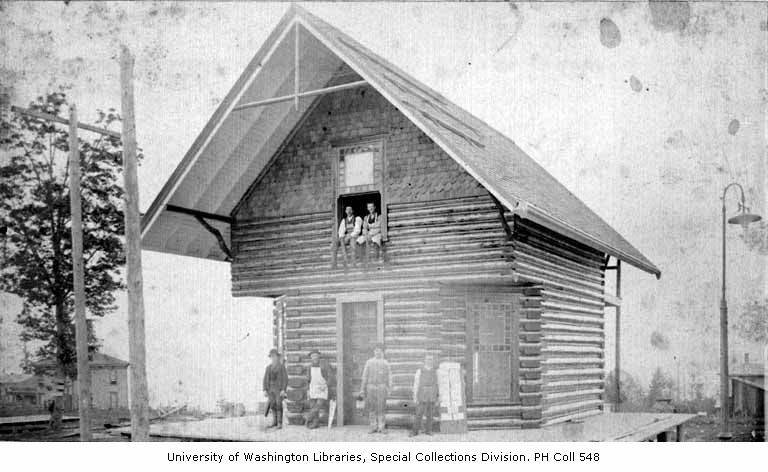Our lives are soothed by an array of service attendants and a flock of mechanical conveniences. Foods “appear” at market stalls as if from a garden or bakery in the sky; machines wash and dry our bodies, clothes and dishes; information is instantly beamed into our homes.
Canned goods are opened, lawns manicured, monster vehicles haul away our waste. And we separate ourselves from each other with double-paned glass, ornate doors and fencing.
However, let’s pause to consider the simple lifestyle our forebearers enjoyed and how they survived without our gadgets.
To keep curious others from roaming through one-room cabins, members of the Seattle pioneer Denny party built double – or “Dutch” – doors. The Dutch door is rarely seen today. The lower half, when closed, allows light to enter a windowless cabin. It also provides a kind of screen for visitors to watch what was going on within, without actually entering the premises. In other words, the Dutch door prevented the uninvited from wandering into the midst of a resident’s life. After all, it was bad form for pioneers to shoo away neighbors who likely “owned” the property upon which pioneers squatted.
Early pioneer cabins were often decorated with evergreens and wildflowers. Women’s costumes incorporated colored lining from sugar barrels, aprons pieced together from men’s handkerchiefs, with purloined bits of metal and shell for jewelry. Boot polish often consisted of a mix of cooking grease and black soot from a kettle. If you wanted to keep your lamp lit, dogfish oil would do. And if the wick burned down, you braided it with bits of rag.
Entertainment was sometimes provided by Native chants, often in the dead of night to drive away evil spirits. A passing ship might bring dog-eared copies of Dickens’ novels or stained newspapers from yesteryear. By 1852 issues of the locally produced “Columbian,” published in the village of Olympia, were circulated widely. Tidbits of gossip, flattering classified ads, and purple prose filled its pages.
Edible game and fish, including clams prepared a dozen ways, wild goose, squirrel and Native potatoes called “wapato,” kept pioneers alive. When a ship brought flour or cornmeal, pastries were concocted with cranberries, dewberries, whortleberries and raspberries. (Whortleberries and dewberries are varieties of the Pacific Northwest blackberry.)
The next time you are soaking or showering in a tile bath, remember Seattle’s first bathtub constructed by Arthur Denny and William Bell. It was made from a cedar log split into boards, smoothly planed and shaped into an oblong box, not unlike a coffin. Washtubs were easier – an old flour barrel cut in half.
And for dinner, fish soup in a giant hearth kettle, with bread mixed and baked in a California gold pan. Bon Appetit!
Discover more from Post Alley
Subscribe to get the latest posts sent to your email.
